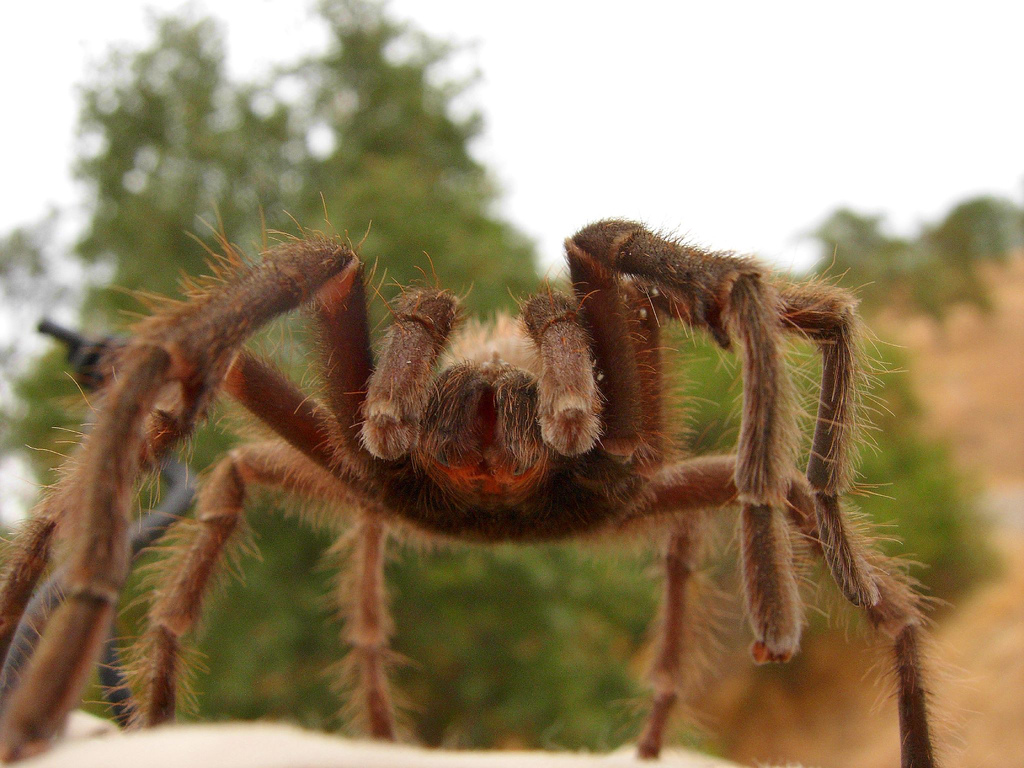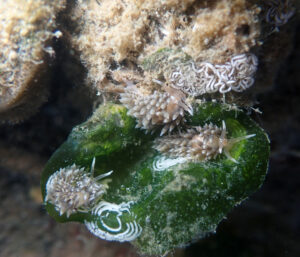Q: What’s the largest underground-dwelling invertebrate in the Bay Area? How does it live? [Paul, Berkeley]
A: Paul, that has to be the tarantula, which is about five inches across.
California’s dozen or so species of “tarantulas” are in the genus Aphonopelma in a family called the Mygalomorphs. But our spiders are not the original tarantulas. That’s Lycosa tarantula, found in Europe, and named for the Italian town of Taranto, where people believed the spider’s bite was fatal. Just preceding death, the victim entered a state of melancholy called tarantism. To survive, you had to listen to music–not just any music, but the right music. The patient would be unmoved until the right tune was struck. With a wild look in his eye, he’d begin an uncontrolled frenzy, leaping about, flailing his arms and shrieking. Finally he’d drop, exhausted but cured. The patient would have recovered anyway. Tarantula venom is mild, and it’s pretty hard to get a tarantula to bite. But at least we got the tarantella dance out of it.
Tarantulas may be big, but they’re far from the world’s largest land arthropod, the Southern Pacific coconut crab (up to three feet across!). That’s about the limit. As an animal with an exoskeleton gets bigger, its body mass increases more quickly than its skeleton’s strength, piling on enough weight that a larger creature couldn’t move. (Water is another story– the largest animals with and without skeletons live in the sea.)
Luckily for male tarantulas, they can move–and find mates. Normally nocturnal, they leave their burrows morning and evening each fall in search of females. A male finds a female’s burrow, then taps the entrance with his legs, enticing her to emerge. This is a dangerous operation. The female may charge him with fangs exposed. He grabs her fangs with special spurs on his front legs, then he flips her on her back, they mate, and he makes a hasty retreat to avoid getting eaten. With people, mating sometimes follows dinner; with spiders, it’s the reverse (though that happens less often than once thought).
Exposed to predators and the elements, male tarantulas live only a few months after reaching maturity, but females have been known to live more than 20 years. Soon she will plug her burrow and spend the winter underground. In her lair the following spring she will deposit around 500 eggs in a thick egg sac she weaves. The spiderlings hatch in about a month, hang out for a while, then leave the burrow.
The best location to view this autumn phenomenon is the inner Coast Range mountains like Diablo and Hamilton. There is even a tarantula festival in Henry Coe State Park on October 6.
Send your questions to atn@baynature.org.





